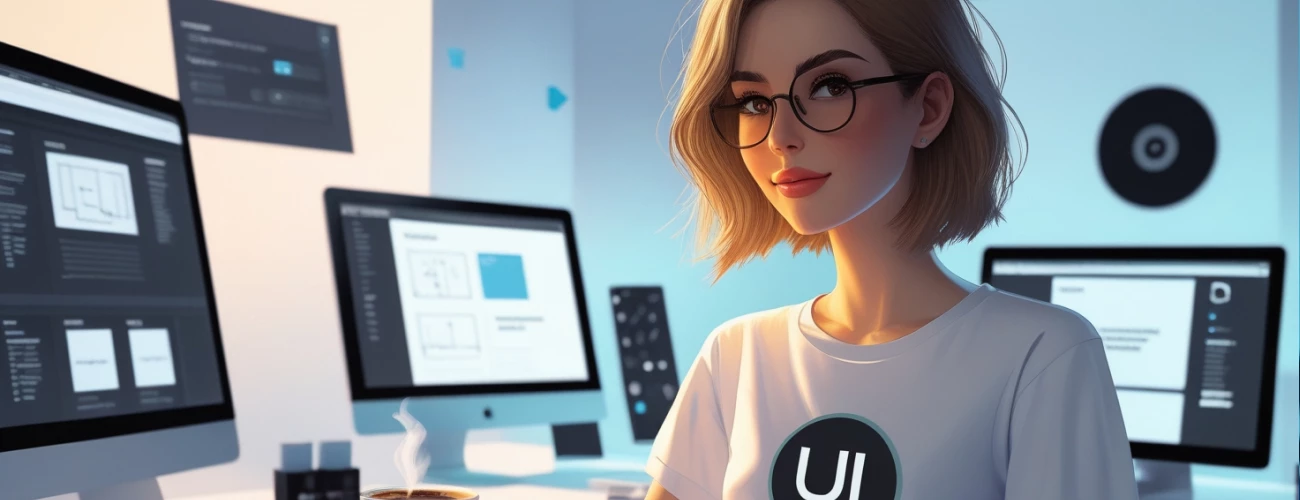Microanimations in UI: improving the web experience without unnecessary load

A stylish, modern website cannot do without microanimations in its UI. They make the interface clearer and working with the resource more enjoyable. Small visual effects respond sensitively to user actions: they prompt, confirm, and guide. This is a simple way to add smoothness, engagement, and a sense of live response without overloading the system. This article explains how to implement them in the interface.
What are microanimations?
UI microanimations are not separate images, but light animation effects in the user interface that:
- indicate the status of ongoing processes — loading, form submission, action completed successfully;
- make the interface smooth and “lively”;
- respond to the actions of the site visitor, creating useful and visually pleasing effects — for example, enlarging the “buy” or “services” button when the cursor is hovered over it.
Interface animation is usually implemented using CSS, JavaScript libraries (such as GSAP or Anime.js), and animated SVG elements. Modern UI frameworks, including React, Vue, and Angular, often use special solutions such as Framer Motion, which provide more flexible animation control.
Why are they needed?
UX microanimations perform several important functions at once, including:
- action confirmation — when clicking or hovering over a button or form, the user immediately sees a visual response, which gives them confidence in their actions;
- navigation and focus — smooth transitions help direct the gaze in the right direction. This makes interaction with the interface more intuitive;
- reducing cognitive load — smooth effects break down complex processes into understandable steps, making it easier to perceive information;
- emotional engagement — subtle animations create a feeling of a “live” response, which forms a positive impression of the product.
Thus, the competent use of UX microanimations not only makes the site visually interesting. Their use also increases efficiency and convenience, while maintaining ease and speed of loading.
Tools and methods of implementation
To add microanimations to a site, developers use simple styles, JavaScript scripts, and vector graphics. Each of these tools has its own purpose:
- CSS is suitable for smooth transitions and hover effects;
- JavaScript scripts allow you to create more complex animations with logic and interaction;
- vector images (SVG) are convenient for animating icons and graphic elements without losing quality.
The combination of these tools allows you to create both simple visual responses and full-fledged animated scenes.

CSS animations
This tool is needed to quickly and easily add visual effects to the interface, such as button highlighting and smooth appearance of elements on the page. CSS animation of a website is easily implemented using the transition and animation properties, does not require connecting third-party libraries, and has almost no effect on the loading speed of the website. Using it is a great way to liven up the interface without unnecessary complexity.
JavaScript libraries
These are used when you need to add more complex effects, such as:
- animating the gradual appearance of cards;
- moving elements along a curve;
- effects when scrolling or clicking a button.
Libraries such as GSAP, Anime.js, and Popmotion allow you to precisely control the timing, sequence, and style of animations. The Micro animation JS library makes it easy to configure the desired actions — to make one element appear after another, rotate, scale, or move along a specified trajectory. All this is possible without unnecessary code and with high precision.
Working with SVG
This tool allows you to animate vector icons, logos, and illustrations. With it, you can create subtle, detailed effects — for example, pulsating objects or text appearing letter by letter. Unlike raster images, SVG animation remains clear at any scale, making it ideal for screens with different resolutions.
Balancing UX vs. performance
Proper use of SEO micro-animations helps maintain visibility in search engines: effects should be light, asynchronous, and not block the main content. To harmoniously combine effective UX solutions with high website performance, pay attention to the following points:
- use hardware acceleration by applying the transform and opacity properties to animations, which are processed by the GPU and do not require a complete recalculation of the layout;
- minimize the amount of code and assets by choosing short CSS code snippets or small SVG files instead of heavy JS libraries, if the task does not require complex logic;
- animations should be short — from 0.2 to 0.5 seconds, otherwise the effects will be tiring and distracting, as well as requiring more resources;
- provide a mechanism for disabling microanimations, which may be necessary if the user opens the site on a weak device.
To learn more about the development service with elements such as microanimations in the UI, prices, and terms, contact the manager of the IT company Megasite. Our team has been creating websites in Kyiv and other cities of Ukraine for over 10 years. We select individual solutions for specific tasks, make the interface lively, and interaction with it as convenient and effective as possible.
Your project
Call/write:


